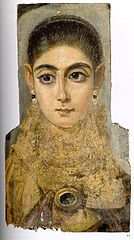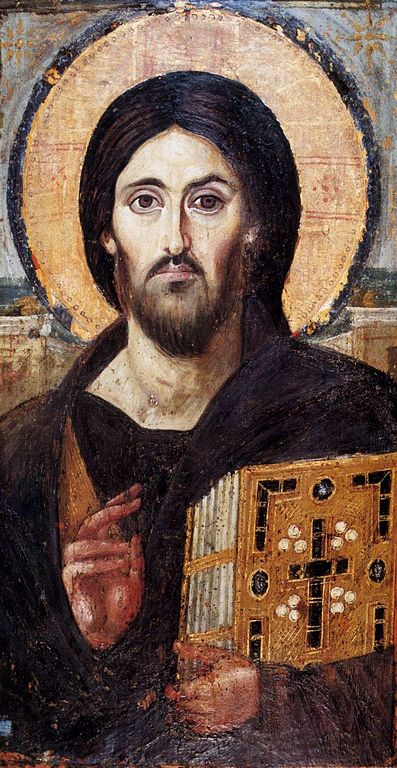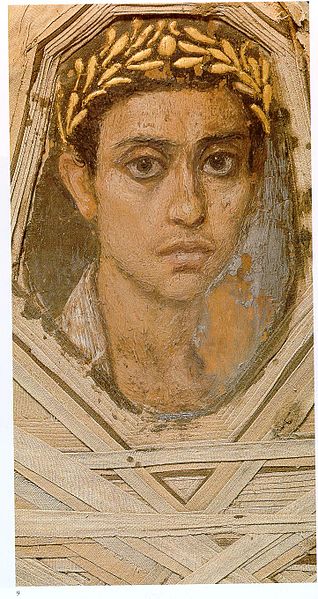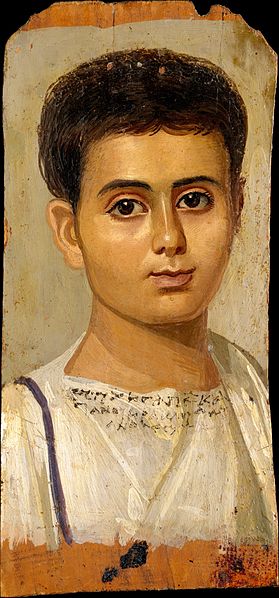

Christ Pantocrator
Mid-6th century
Encaustic icon
St. Catherine's Monastery, Sinai
This is the oldest known example of the Christ Pantocrator iconographic type. As in subsequent examples, Christ holds a book in his left hand and blesses the viewer with his right. Chatzidakis argues for a date in the mid-6th century on the basis of the panel's classical style, which was favored at that time (205-207).
A number of sites on the internet suggest that the two sides of the face represent the two natures of Christ, a doctrine which had been formulated in the previous century.
Mirrored composites of the image, it is said, show that the hand side of the face represents Christ's human nature, the book side his divine nature. But, as Chatzidakis points out (200), the style and the medium "find an almost direct ancestry in the so-called portraits of Fayum," (see below). Pronounced facial asymmetry is a characteristic of those images and may instance "a general stylistic tendency toward spiritualization" (201), but of course their spirituality has nothing to do with Christian theology. A further problem is that there are no contemporary comments relating the image to 6th-century Christology. Nor is it clear why a thin, bright face would be more appropriate to Christ's human side than a broader, darker one.
Read more about images of Christ Pantocrator.
Sources: Main image, this page at Wikimedia Commons. Mirrored construct: this page at this page at Wikimedia Commons.


